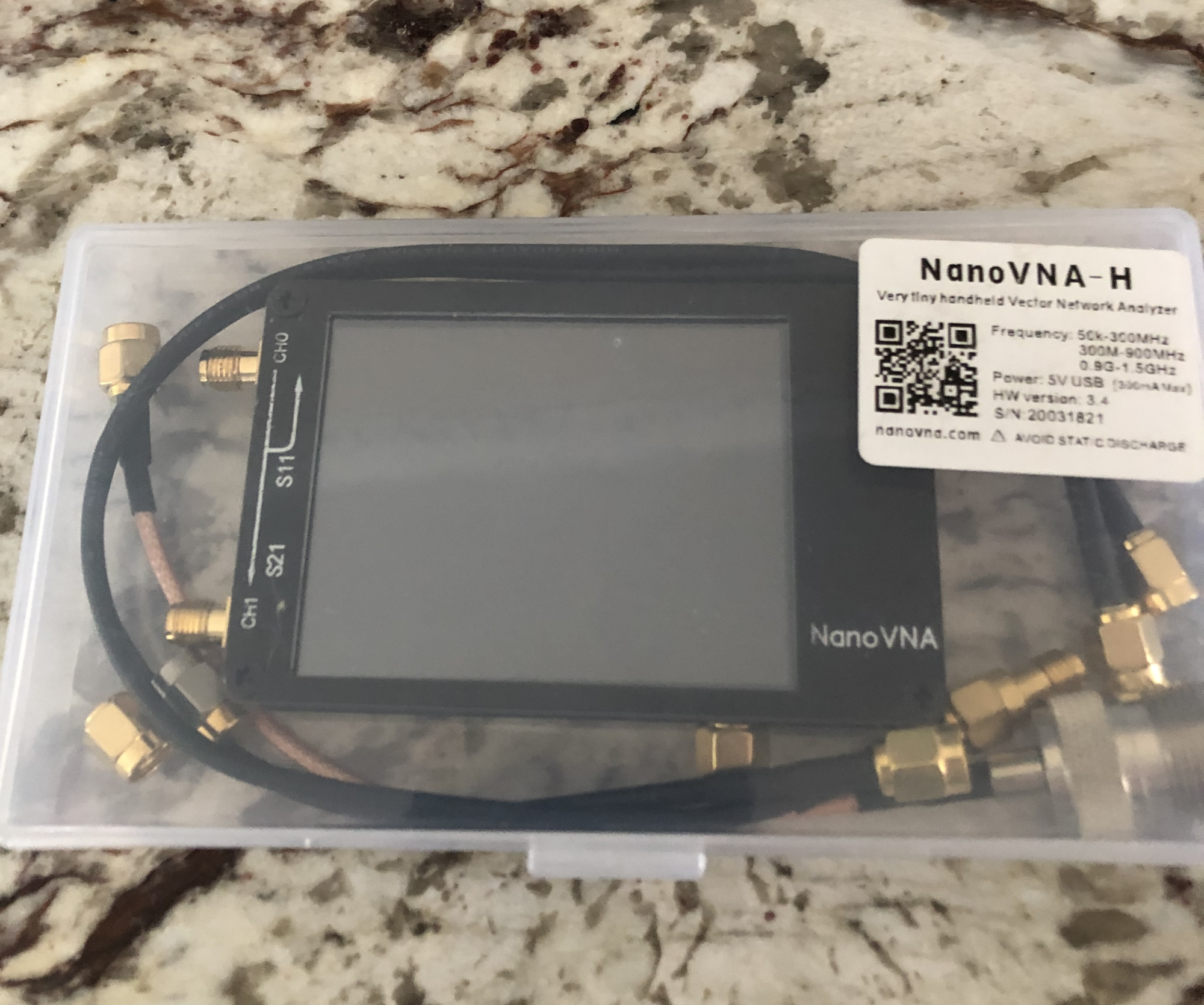Been working on some station upgrades. One being feed lines for the 144/222/432 MHz. I was lucky enough to score two lengths of Andrews Heliax 7/8″ feed line. I ordered some connectors and got to work.
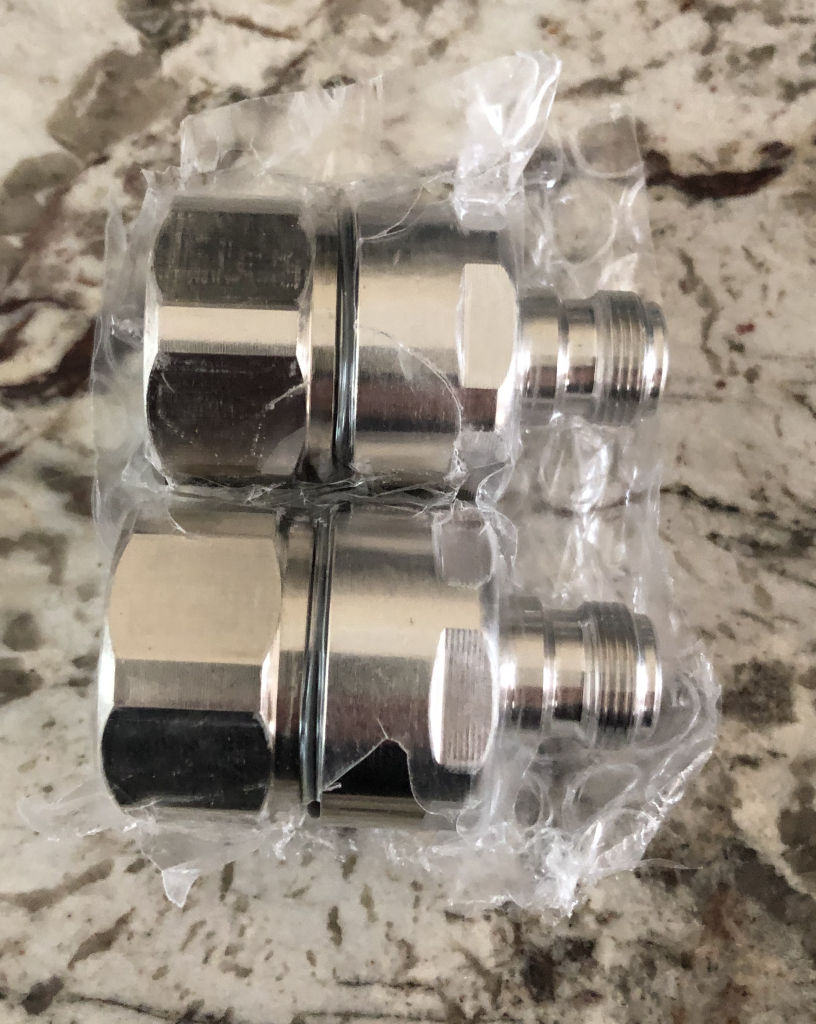
I went to YouTube and found some install videos and started on one of the cables. The first one took about 20 minutes as I had to figure out how to do it but now I think I could install one in around 5 minutes or so.
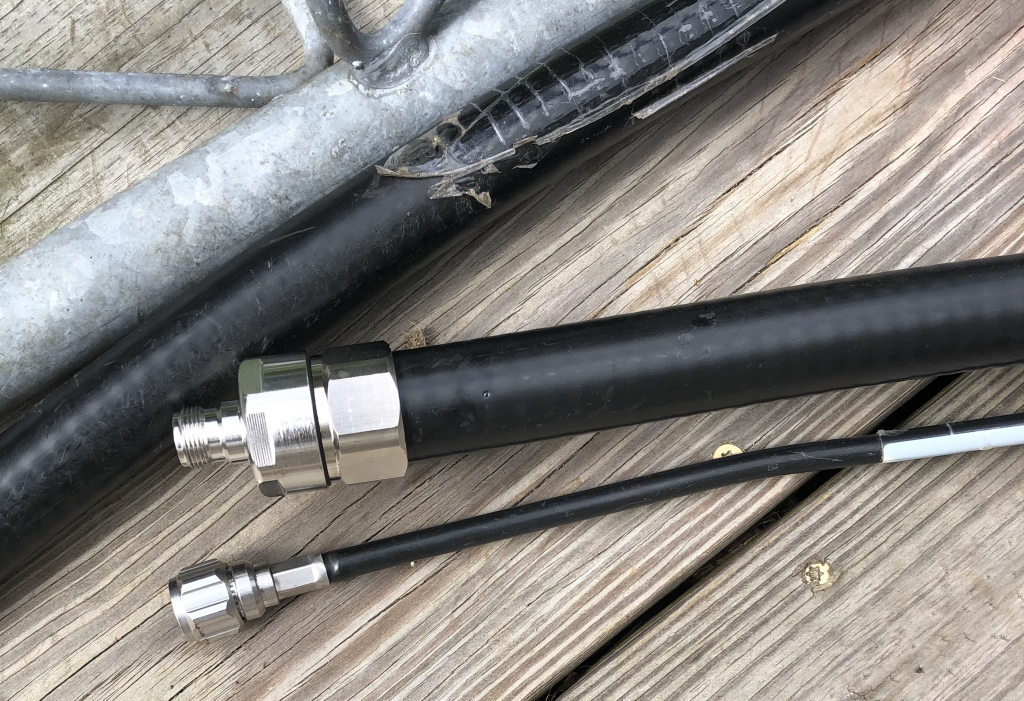
Next task was to test the cable and make sure I was seeing the expected results. First thing I did was get out my meter and do a continuity test between center pins, then the shield and finally shield to center pin. All tested good so it was on to some more interesting tests.
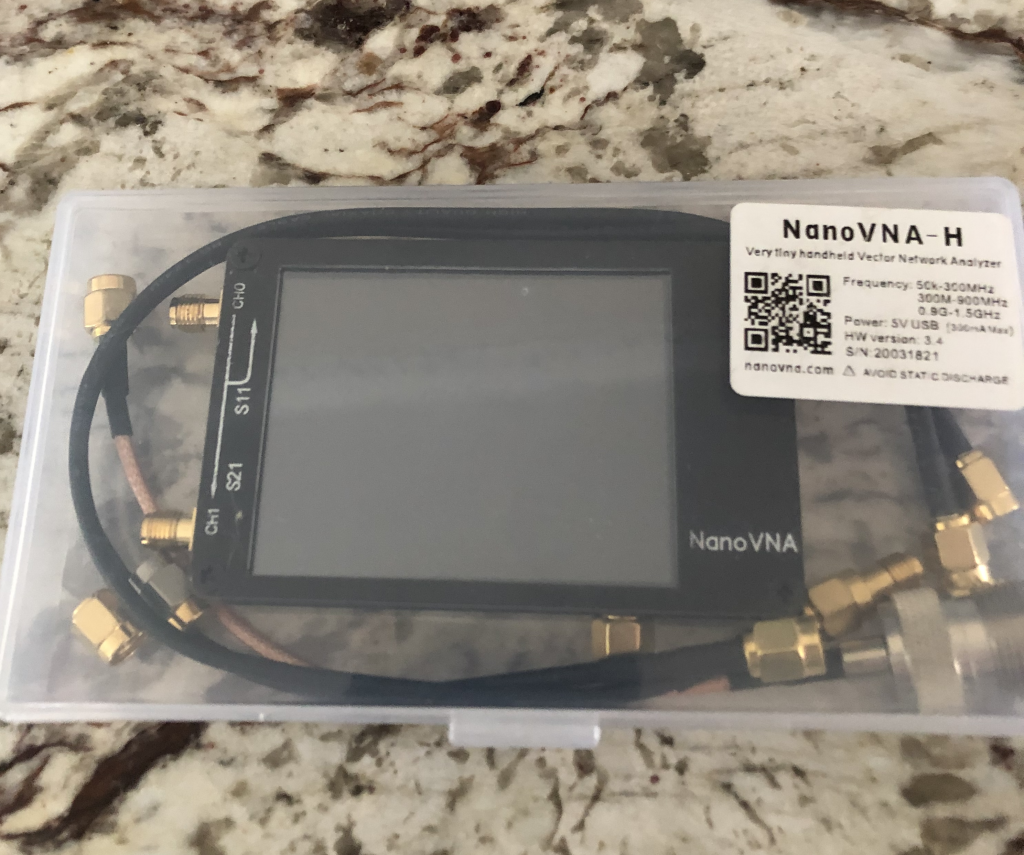
The NanoVNA is a Vector Network Analyzer that covers 50KHz -900MHz. But what is truly amazing is that it ran about $40! This thing does the same stuff that lab equipment does that costs 10’s of thousands of dollars. There are a number of comparisons on the Internet and for the money it does an amazing job. I originally purchased it to analyze and tune antennas but quickly learned that it could do so much more.
In this case I used the NanaVNA to sweep the coax for any issue and to measure return loss. I knew this cable was a little over 50 ft long. Sweeping the cable confirmed this by telling me it was 17.745 m or about 58 ft. This is a cool feature so if you have a bad piece of cable the VNA will actually tell you at what point in the cable there is an issue. This cable is good.
In addition to the LCD on the NanaVNA you can hook it up to your computer and use a program called NanoVNASaver. This makes it so much easier to use. I set the sweep to go from 50 MHz to 500 MHz so I could see how the coax performs on the bands I may use it on.
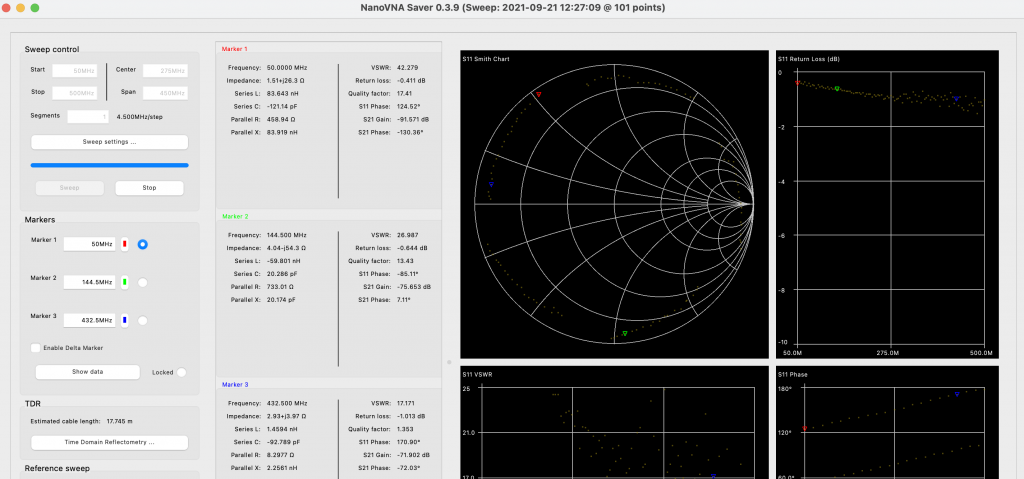
So the sweep results were about what I had expected. The return loss at 50 MHZ is 0.411 dB, 144 is 0.644 db and 432 is 1.013dB. These numbers are misleading as it’s actually the round trip so you have to divide them in half. So for instance on 144 for 58 ft of cable the total loss is 0.322 db. In comparison the loss for RG-8 would be 1.353 and LMR-400 would be 0.865. That’s a pretty major difference!
Successful project. The new coax will make a big difference on the higher bands and learned a lot about how to use the NanoVNA for other than SWR measurements.
